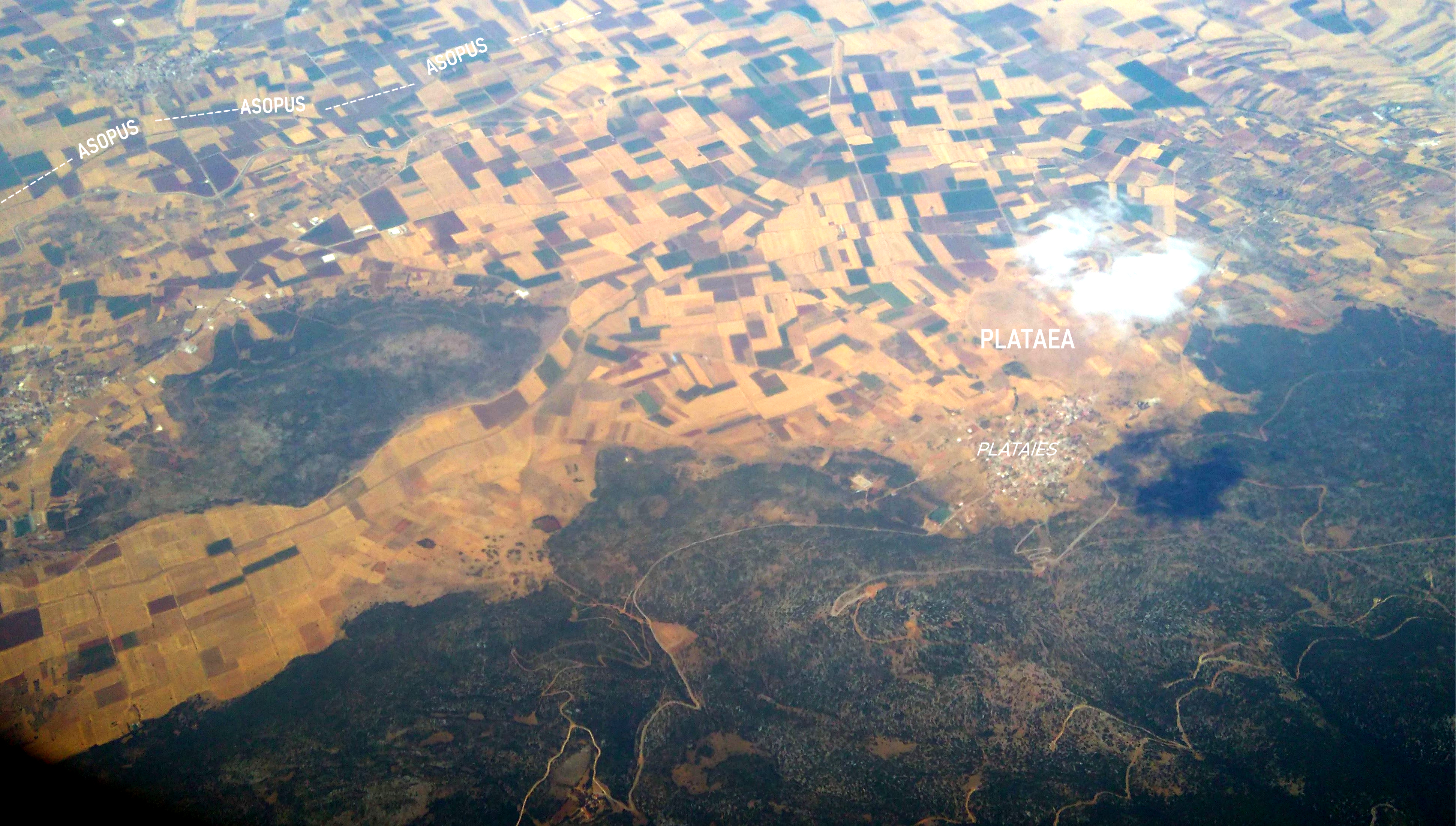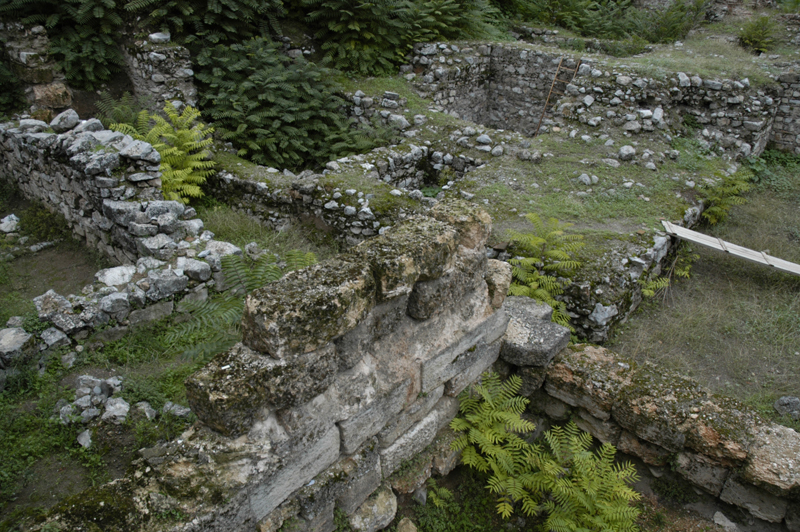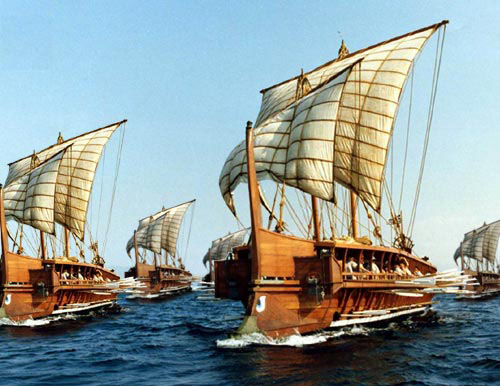|
Battle Of Leuctra
The Battle of Leuctra ( grc-gre, Λεῦκτρα, ) was a battle fought on 6 July 371 BC between the Boeotians led by the Thebans, and the Spartans along with their allies amidst the post-Corinthian War conflict. The battle took place in the vicinity of Leuctra, a village in Boeotia in the territory of Thespiae. The Theban victory shattered Sparta's immense influence over the Greek peninsula, which Sparta had gained with its victory in the Peloponnesian War a generation earlier. Prelude In 371 BC, the newly established democracy of Thebes had elected four Boeotarchs, the traditional title of the generals of the Boeotian League, and so proclaimed their intention of reconstituting the aforementioned league that Sparta had disbanded.Tritle 1987, p. 80 During this period, Thebes had an ally in Athens, but Athens was far from happy with the treatment Plataea had received. When it came to swearing an oath to respect the treaty, Sparta swore on behalf of itself and its allies ... [...More Info...] [...Related Items...] OR: [Wikipedia] [Google] [Baidu] |
Peloponnesian War
The Peloponnesian War (431–404 BC) was an ancient Greek war fought between Athens and Sparta and their respective allies for the hegemony of the Greek world. The war remained undecided for a long time until the decisive intervention of the Persian Empire in support of Sparta. Led by Lysander, the Spartan fleet built with Persian subsidies finally defeated Athens and started a period of Spartan hegemony over Greece. Historians have traditionally divided the war into three phases. The first phase (431–421 BC) was named the Ten Years War, or the Archidamian War, after the Spartan king Archidamus II, who launched several invasions of Attica with the full hoplite army of the Peloponnesian League, the alliance network dominated by Sparta. However, the Long Walls of Athens rendered this strategy ineffective, while the superior navy of the Delian League (Athens' alliance) raided the Peloponnesian coast to trigger rebellions within Sparta. The precarious Peace of Nicias ... [...More Info...] [...Related Items...] OR: [Wikipedia] [Google] [Baidu] |
Plataea
Plataea or Plataia (; grc, Πλάταια), also Plataeae or Plataiai (; grc, Πλαταιαί), was an ancient city, located in Greece in southeastern Boeotia, south of Thebes.Mish, Frederick C., Editor in Chief. “Plataea.” '' Webster’s Ninth New Collegiate Dictionary''. 9th ed. Springfield, MA: Merriam-Webster Inc., 1985. , (indexed), and (deluxe). It was the location of the Battle of Plataea in 479 BC, in which an alliance of Greek city-states defeated the Persians. Plataea was destroyed in the Peloponnesian War by Thebes and Sparta in 427 BC, and rebuilt in 386. The modern Greek town of Plataies is built near its ruins. Alliance with Athens and presence at Marathon Herodotus wrote that, in order to avoid coming under Theban hegemony, Plataea offered to "put themselves into Spartan hands". However, the Spartans refused this offer and, wishing to cause mischief between the Boeotians and Athens, recommended that the Plataeans ally themselves with Athens ins ... [...More Info...] [...Related Items...] OR: [Wikipedia] [Google] [Baidu] |
Hippeis
''Hippeis'' ( grc, ἱππεῖς, singular ἱππεύς, ''hippeus'') is a Greek term for cavalry. In ancient Athenian society, after the political reforms of Solon, the ''hippeus'' was the second highest of the four social classes. It was composed of men who had at least 300 medimnoi or their equivalent as yearly income. According to the Timocratic Constitution the average citizen had a yearly income of less than 200 medimnoi. This gave the men who made 300 medimnoi the ability to purchase and maintain a war horse during their service to the state. Its counterparts were the Roman ''equites'' (equestrians) and medieval knights. Early formations In Sparta, the ''hippeus'' was the royal guard of honour. It consisted of 300 Spartan youths under the age of thirty. They would serve as heavily armed infantry soldiers in the King's bodyguard. The Athenian cavalry was formed after the Greco-Persian War in the 5th century BC; it originally consisted of 300 men and then increas ... [...More Info...] [...Related Items...] OR: [Wikipedia] [Google] [Baidu] |
Phalanx
The phalanx ( grc, φάλαγξ; plural phalanxes or phalanges, , ) was a rectangular mass military formation, usually composed entirely of heavy infantry armed with spears, pikes, sarissas, or similar pole weapons. The term is particularly used to describe the use of this formation in ancient Greek warfare, although the ancient Greek writers used it to also describe any massed infantry formation, regardless of its equipment. Arrian uses the term in his ''Array against the Alans'' when he refers to his legions. In Greek texts, the phalanx may be deployed for battle, on the march, or even camped, thus describing the mass of infantry or cavalry that would deploy in line during battle. They marched forward as one entity. The term itself, as used today, does not refer to a distinctive military unit or division (e.g., the Roman legion or the contemporary Western-type battalion), but to the type of formation of an army's troops. Therefore, this term does not indicate a standar ... [...More Info...] [...Related Items...] OR: [Wikipedia] [Google] [Baidu] |
Phalanx Formation
The phalanx ( grc, φάλαγξ; plural phalanxes or phalanges, , ) was a rectangular mass military formation, usually composed entirely of heavy infantry armed with spears, pikes, sarissas, or similar pole weapons. The term is particularly used to describe the use of this formation in ancient Greek warfare, although the ancient Greek writers used it to also describe any massed infantry formation, regardless of its equipment. Arrian uses the term in his ''Array against the Alans'' when he refers to his legions. In Greek texts, the phalanx may be deployed for battle, on the march, or even camped, thus describing the mass of infantry or cavalry that would deploy in line during battle. They marched forward as one entity. The term itself, as used today, does not refer to a distinctive military unit or division (e.g., the Roman legion or the contemporary Western-type battalion), but to the type of formation of an army's troops. Therefore, this term does not indicate a standard c ... [...More Info...] [...Related Items...] OR: [Wikipedia] [Google] [Baidu] |
Sacred Band Of Thebes
The Sacred Band of Thebes (Ancient Greek: , ''Hierós Lókhos'') was a troop of select soldiers, consisting of 150 pairs of male lovers which formed the elite force of the Theban army in the 4th century BC, ending Spartan domination. Its predominance began with its crucial role in the Battle of Leuctra in 371 BC. It was annihilated by Philip II of Macedon in the Battle of Chaeronea in 338 BC. Formation The earliest surviving record of the Sacred Band by name was in 324 BC, in the oration ''Against Demosthenes'' by the Athenian logographer Dinarchus. He mentions the Sacred Band as being led by the general Pelopidas and, alongside Epaminondas who commanded the army of Thebes (Boeotia), were responsible for the defeat of the Spartans at the decisive Battle of Leuctra (371 BC). Plutarch (46–120 AD), a native of the village of Chaeronea, is the source of the most substantial surviving account of the Sacred Band. He records that the Sacred Band was originally formed by ... [...More Info...] [...Related Items...] OR: [Wikipedia] [Google] [Baidu] |
Peltasts
A ''peltast'' ( grc-gre, πελταστής ) was a type of light infantryman, originating in Thrace and Paeonia, and named after the kind of shield he carried. Thucydides mentions the Thracian peltasts, while Xenophon in the Anabasis distinguishes the Thracian and Greek peltast troops. The peltast often served as a skirmisher in Hellenic and Hellenistic armies. In the Medieval period, the same term was used for a type of Byzantine infantryman. Description ''Pelte'' shield ''Peltasts'' carried a crescent-shaped wicker shield called a "''pelte''" (Ancient Greek grc, πέλτη, peltē, label=none; Latin: ) as their main protection, hence their name. According to Aristotle, the ''pelte'' was rimless and covered in goat- or sheepskin. Some literary sources imply that the shield could be round, but in art it is usually shown as crescent-shaped. It also appears in Scythian art and may have been a common type in Central Europe. The shield could be carried with a central strap ... [...More Info...] [...Related Items...] OR: [Wikipedia] [Google] [Baidu] |
Philip Sabin
Philip A. G. Sabin is a British military historian who is currently Professor of Strategic Studies in the War Studies Department of King's College London. Biography Sabin is a member of the CAS Air Power Workshop, a small working group of scholars and other theorists convened by the Chief of Air Staff. He is also a member of the Academic Advisory Panel of the Royal Air Force Centre for Air Power Studies. His books on modern warfare include: ''The Future of United Kingdom Air Power'' (1988). His works on ancient warfare include: ''Lost Battles: Reconstructing the Great Clashes of the Ancient World'' (2008), which the ''Michigan War Studies Review'' called "engaging and fresh", and ''The Cambridge History of Greek and Roman Warfare'' (with fellow editors Hans van Wees and Michael Whitby, 2008). The latter has been praised in the ''Bryn Mawr Classical Review'', which reported: "The editors as well as the authors can be congratulated on their efforts in producing this important ... [...More Info...] [...Related Items...] OR: [Wikipedia] [Google] [Baidu] |
Trireme
A trireme( ; derived from Latin: ''trirēmis'' "with three banks of oars"; cf. Greek ''triērēs'', literally "three-rower") was an ancient vessel and a type of galley that was used by the ancient maritime civilizations of the Mediterranean Sea, especially the Phoenicians, ancient Greeks and Romans. The trireme derives its name from its three rows of oars, manned with one man per oar. The early trireme was a development of the penteconter, an ancient warship with a single row of 25 oars on each side (i.e., a single-banked boat), and of the bireme ( grc, διήρης, ''diērēs''), a warship with two banks of oars, of Phoenician origin. The word dieres does not appear until the Roman period. According to Morrison and Williams, "It must be assumed the term pentekontor covered the two-level type". As a ship, it was fast and agile and was the dominant warship in the Mediterranean from the 7th to the 4th centuries BC, when it was largely superseded by the larger quadrire ... [...More Info...] [...Related Items...] OR: [Wikipedia] [Google] [Baidu] |
Creusis
Creusis or Kreusis ( grc, Κρεῦσις), or Creusa or Kreousa (Κρέουσα), also Creusia or Kreousia (Κρεουσία), was a town of ancient Boeotia, at the head of a small bay in the Corinthian Gulf, described by ancient writers as the port of Thespiae. The navigation from Peloponnesus to Creusis is described by Pausanias as insecure, on account of the many headlands which it was necessary to double, and of the violent gusts of wind rushing down from the mountains. Creusis was on the borders of Megaris. One of the highest points of Mount Cithaeron projects into the sea between Creusis and Aegosthena, the frontier town in Megaris, leaving no passage along the shore except a narrow path on the side of the mountain. In confirmation of Pausanias, William Martin Leake, who visited the site in the 19th century, remarks that this termination of Mt. Cithaeron, as well as all the adjoining part of the Alcyonic Sea, is subject to sudden gusts of wind, by which the passage of such a ... [...More Info...] [...Related Items...] OR: [Wikipedia] [Google] [Baidu] |
Thisbae
Thisbe ( grc, Θίσβη), or Thisbae or Thisbai (Θίσβαι), was a town of Boeotia, described by Strabo as situated at a short distance from the sea, under the southern side of Mount Helicon, bordering upon the confines of Thespiae and Coroneia. Thisbe is mentioned in the Catalogue of Ships in the ''Iliad'' by Homer, who says that it abounds in wild pigeons – πολυτρήτρωνά τε Θίσβην; and both Strabo and Stephanus of Byzantium remark that this epithet was given to the city from the abundance of wild pigeons at the harbour of Thisbe. Xenophon remarks that Cleombrotus I marched through the territory of Thisbe on his way to Creusis before the Battle of Leuctra in 371 BCE. Description The only public building at Thisbe mentioned by Pausanias was a temple of Heracles, to whom a festival was celebrated. The same writer adds that between the mountain on the sea-side and the mountain at the foot of which the town stood, there is a plain which would be inu ... [...More Info...] [...Related Items...] OR: [Wikipedia] [Google] [Baidu] |
Defile (geography)
In geography, a defile is a narrow pass or gorge between mountains or hills. The term originates from a military description of a route through which troops can march only in a narrow column or with a narrow front. On emerging from a defile (or something similar) into open country, soldiers are said to " debouch". Background In a traditional military formation, soldiers march in ranks (the depth of the formation is the number of ranks) and files (the width of the formation is the number of files), so, if a column of soldiers approaches a narrow pass, the formation must narrow, and so the files on the outside must be ordered to the rear (or to some other position) so that the column has fewer files and more ranks. The French verb for this order is ''défiler'', from which the English verb comes, as does the physical description for a valley that forces this manoeuvre. Defiles of military significance can also be formed by other physical features that flank a pass or path an ... [...More Info...] [...Related Items...] OR: [Wikipedia] [Google] [Baidu] |

_-_Thucydides.jpg)

.jpg)



